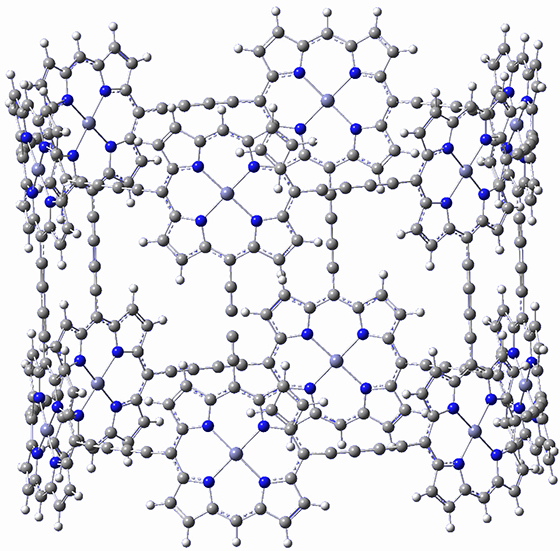Neuhaus, P.; Cnossen, A.; Gong, J. Q.; Herz, L. M.; Anderson, H. L. Angew. Chem. Int. Ed. 2015, 54, 7344-7348
Contributed by Steven Bachrach.
Reposted from Computational Organic Chemistry with permission

This work is licensed under a Creative Commons Attribution-NoDerivs 3.0 Unported License.
Contributed by Steven Bachrach.
Reposted from Computational Organic Chemistry with permission
I don’t really have anything to say about this recent paper by Anderson, et al.1 They have simply prepared a very beautiful structure, an aryllated analogue of 1. They even optimized the structure of 1 at BLYP/6-31G(d) and it’s shown in Figure 1. That must have taken some time!
Figure 1. BLYP/6-31G(d) optimized structure of 1.
(Remember that you can manipulate this structure by simply clicking on in, which will launch the JMol app.)
(Remember that you can manipulate this structure by simply clicking on in, which will launch the JMol app.)
References
(1) Neuhaus, P.; Cnossen, A.; Gong, J. Q.; Herz, L. M.; Anderson, H. L. "A Molecular Nanotube with Three-Dimensional π-Conjugation," Angew. Chem. Int. Ed. 2015, 54, 7344-7348, DOI:10.1002/anie.201502735.

This work is licensed under a Creative Commons Attribution-NoDerivs 3.0 Unported License.

No comments:
Post a Comment